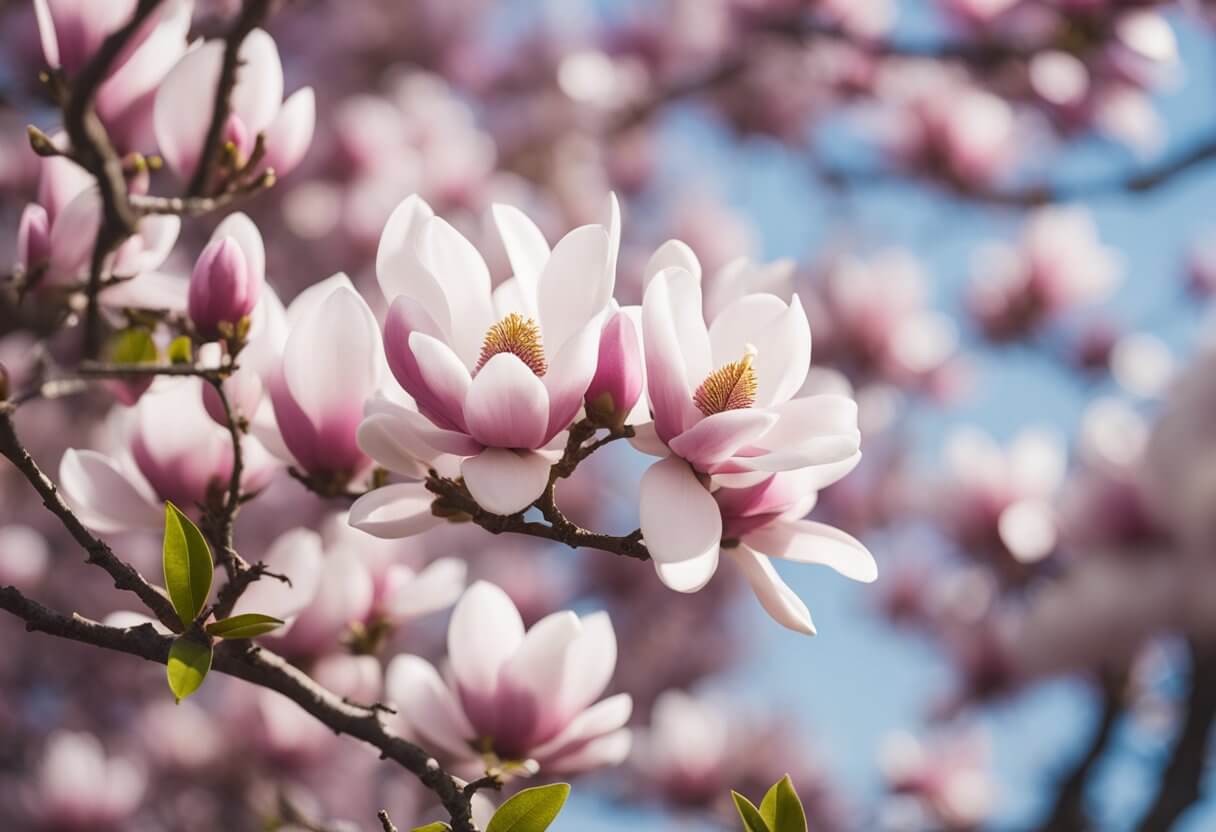When are Magnolia in Season?
Magnolias are beautiful flowers that are popularly grown for their showy blooms and fragrant scent. If you’re a fan of these stunning flowers, you may be wondering when magnolias are in season so you can enjoy their beauty to the fullest. The good news is that magnolias bloom during different times of the year depending on their species and location.
Most magnolia trees bloom during spring when the weather is beginning to warm up. The exact timing of when the first blooms will show can vary from early-spring, mid-spring, or late-spring. Some magnolia species bloom during late winters to midsummer, generally from February to June. A range of Magnolias, including the Sweet Bay and Southern Magnolias bloom their wide cup-like petals during May and June.
If you’re looking to add magnolias to your garden, it’s important to choose the right species that will thrive in your location. Some magnolias are better suited for colder climates, while others are more tolerant of heat and humidity. With the right care and attention, you can enjoy the beauty of magnolias in your garden or landscape for years to come.
Season Overview
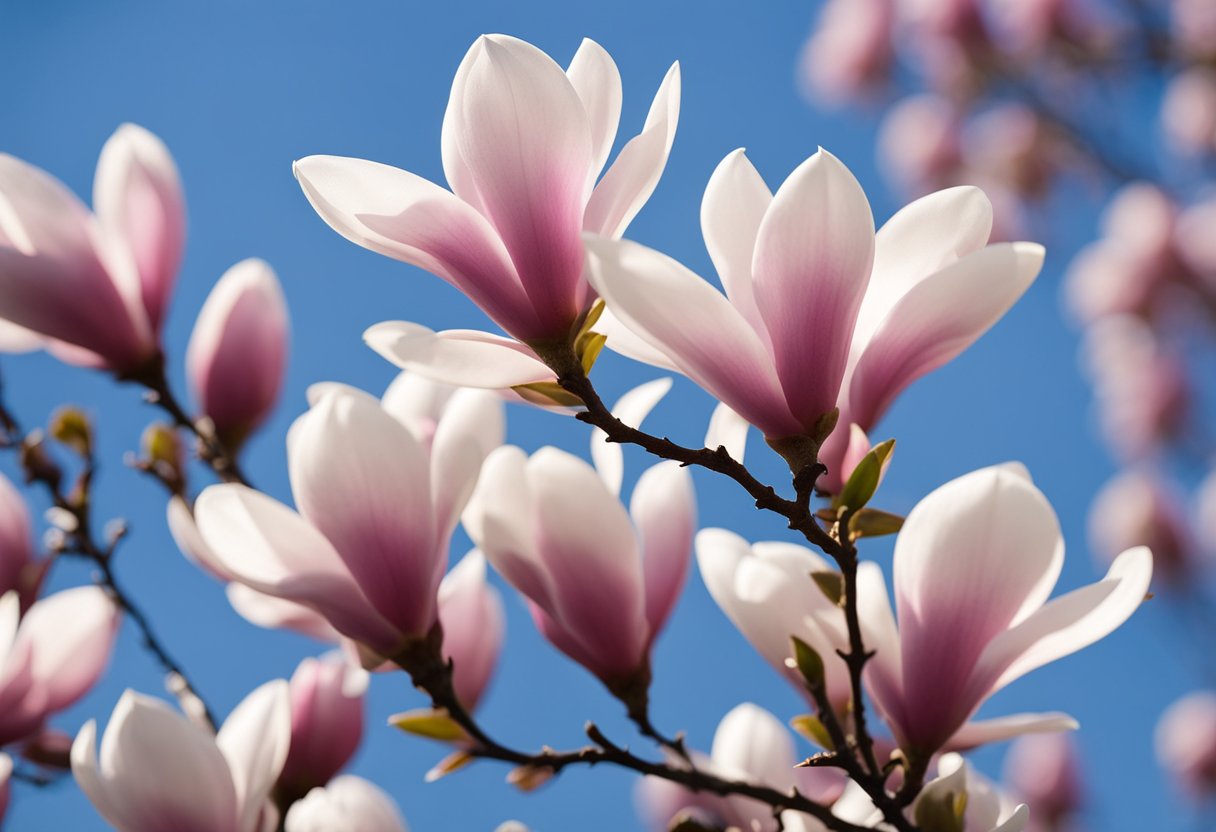
Planting Period
If you’re interested in growing magnolias, the best time to plant them is in the spring. According to Homes & Gardens, the planting period for magnolias is typically from late March to early June, depending on your location and climate. This is when the ground has warmed up enough to allow the roots to grow and establish themselves before the hot summer months.
When planting a magnolia tree, it’s important to choose a location that gets plenty of sunlight and has well-draining soil. Magnolias prefer slightly acidic soil with a pH between 5.0 and 6.5. You can amend the soil with peat moss, compost, or other organic matter to improve drainage and fertility.

Once you’ve chosen the right spot, dig a hole that’s twice as wide and just as deep as the root ball. Gently loosen the roots and place the tree in the hole, making sure that the top of the root ball is level with the ground. Fill in the hole with soil and water thoroughly to settle the soil around the roots.
After planting, be sure to water your magnolia regularly, especially during dry spells. You can also add a layer of mulch around the base of the tree to help retain moisture and regulate soil temperature. With proper care and attention, your magnolia should thrive and produce beautiful blooms for years to come.
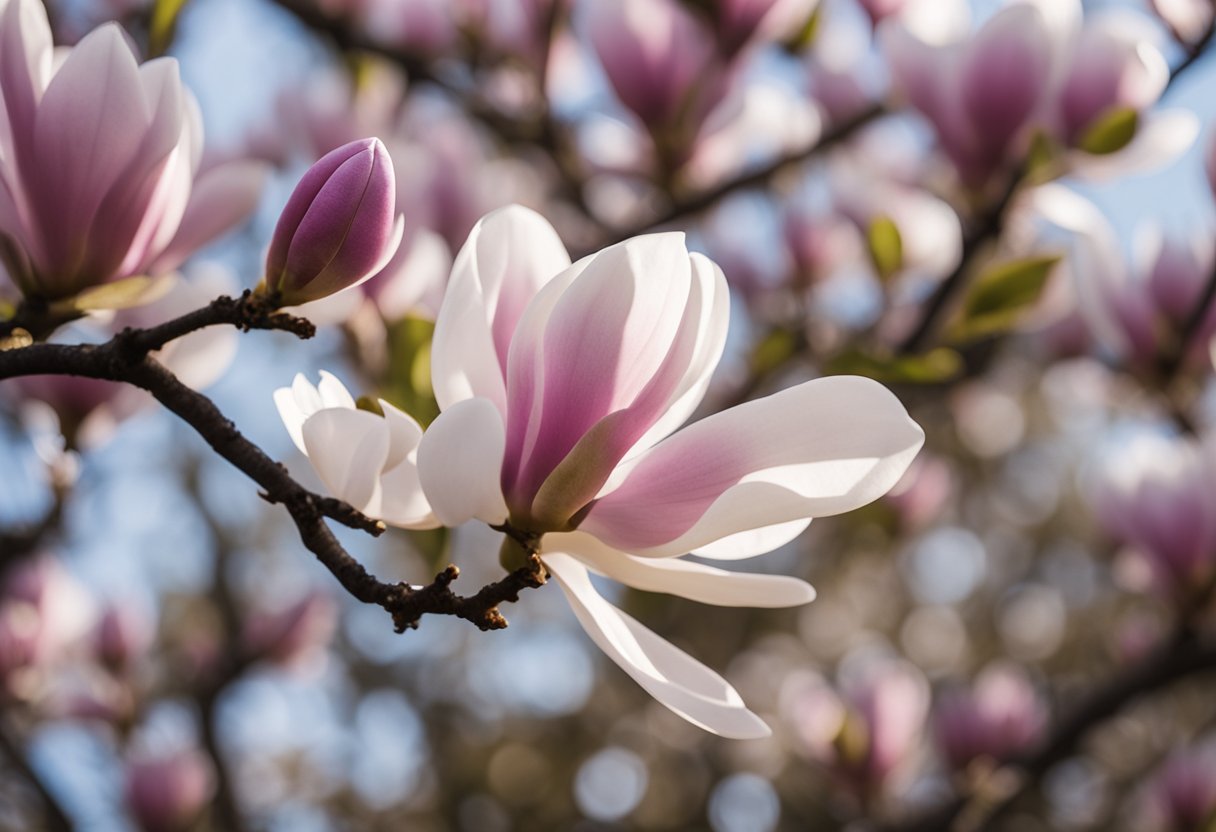
Blooming Period
The exact timing of when magnolias bloom can vary depending on the species and the location where they are grown.
According to Garden Benchtop, most magnolia trees will bloom during spring, when the weather is beginning to warm up. However, the exact timing of when the first blooms will show can vary from early-spring, mid-spring or late-spring. Deciduous magnolias bloom from early to late spring, with some blooming sporadically into the summer months. Many hybrid varieties have been bred for increased cold hardiness. Most evergreen species bloom in the summer with some continuing into the fall.
The blooming period for magnolias can range from late winters to midsummer, generally from February to June, depending on the type of Magnolia species and the place where it grows. A range of Magnolias, including the Sweet Bay and Southern Magnolias bloom their wide cup-like petals during May and June, according to Gardeners Point.
Overall, the blooming period for magnolias is a beautiful and exciting time of year, as these trees produce some of the most stunning flowers in the world. Whether you’re a gardener looking to plant a magnolia tree or simply an admirer of their beauty, understanding when magnolias are in season can help you plan and enjoy their blooms to the fullest.
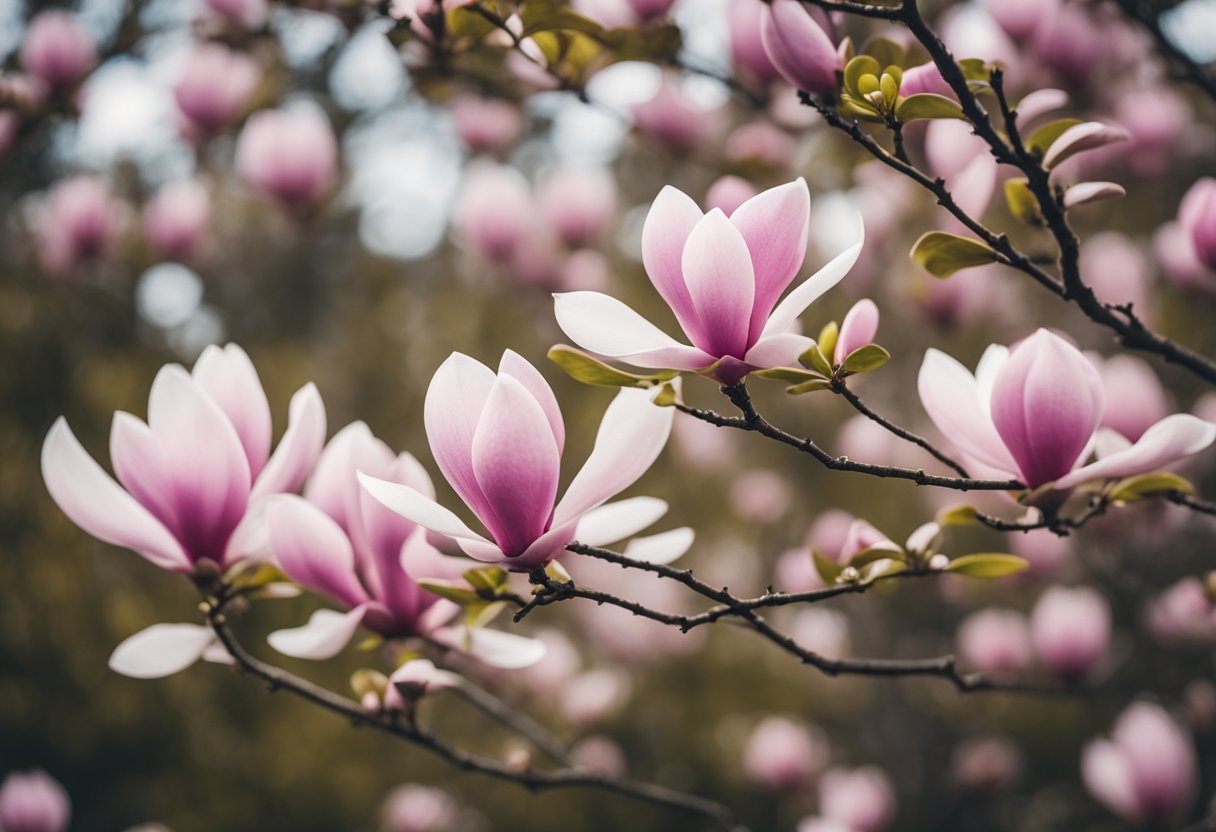
Common Varieties and Their Seasons
Magnolias are known for their beauty and fragrance, and they come in many different varieties. Each variety has its own unique characteristics, including its blooming season. Here are some of the most common magnolia varieties and when you can expect them to be in season:
Southern Magnolia: This variety is known for its large, glossy leaves and fragrant, white flowers. Southern magnolias typically bloom from late spring to early summer.
Star Magnolia: The star magnolia is a shrub-like tree that produces large, white or pink flowers in early spring, before the leaves appear.
Saucer Magnolia: The saucer magnolia is a small tree with large, pink or white flowers that bloom in early spring, before the leaves appear.
Japanese Magnolia: The Japanese magnolia, also known as the Kobus magnolia, produces white or pink flowers in early spring, before the leaves appear.
Sweetbay Magnolia: The sweetbay magnolia is a deciduous or semi-evergreen tree that produces creamy-white flowers in late spring and early summer.
Lily Magnolia: The lily magnolia produces large, pink or purple flowers in early spring, before the leaves appear.
As you can see, magnolias bloom at different times of the year, depending on the variety. If you want to enjoy the beauty and fragrance of magnolias in your garden, consider planting a variety that blooms during your favorite season.
A Table for Seasonality of Each one of the US 50 States
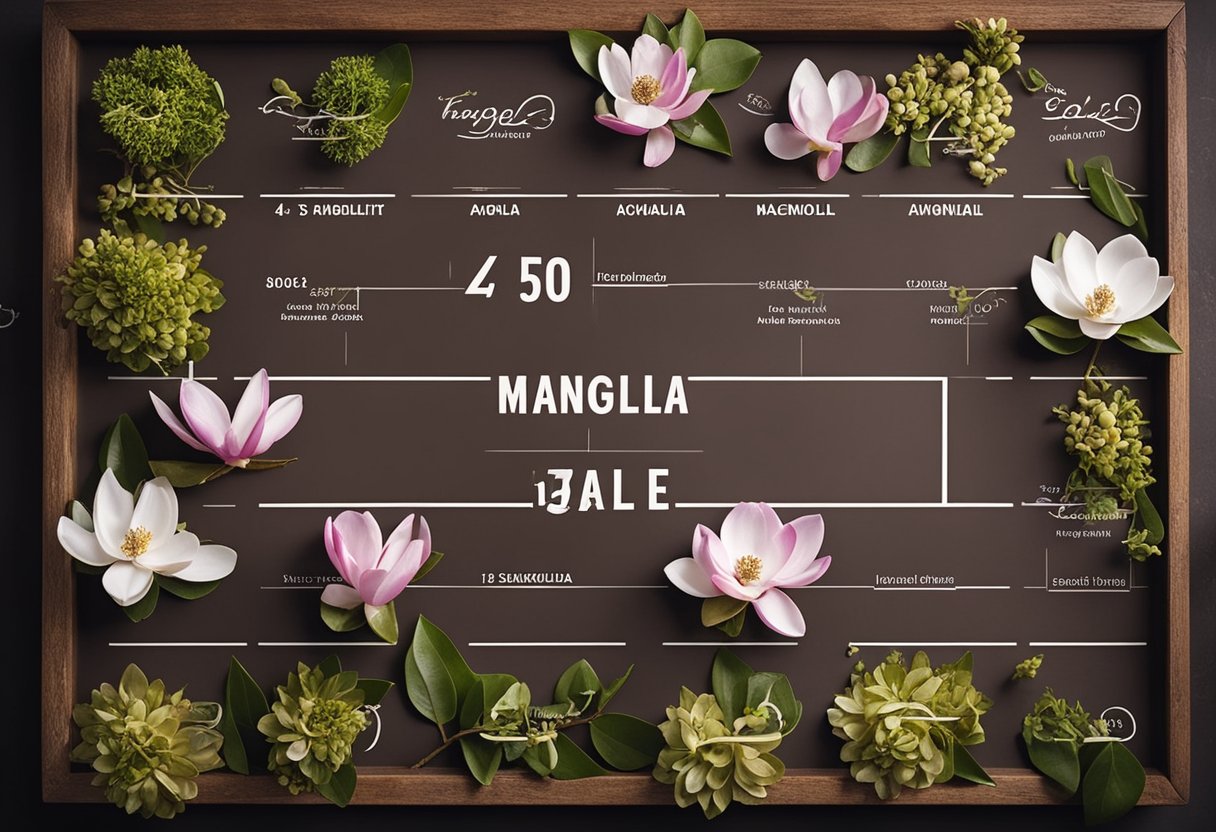
If you’re looking to plan a trip to see magnolias in bloom, it’s important to know when they’re in season in your state. However, the timing of the magnolia bloom can vary widely depending on where you are in the country. To help you plan your trip, we’ve put together a table of the seasonality of each one of the US 50 states.
| State | Spring | Summer | Fall | Winter |
|---|---|---|---|---|
| Alabama | March – May | June – August | September – November | December – February |
| Alaska | May – July | July – September | September – November | December – April |
| Arizona | March – May | June – August | September – November | December – February |
| Arkansas | March – May | June – August | September – November | December – February |
| California | February – May | June – August | September – November | December – January |
| Colorado | April – June | July – August | September – November | December – March |
| Connecticut | April – June | July – September | October – November | December – March |
| Delaware | April – June | July – September | October – November | December – March |
| Florida | March – May | June – August | September – November | December – February |
| Georgia | March – May | June – August | September – November | December – February |
| Hawaii | Year-round | Year-round | Year-round | Year-round |
| Idaho | May – June | July – August | September – October | November – April |
| Illinois | April – May | June – August | September – November | December – March |
| Indiana | April – May | June – August | September – November | December – March |
| Iowa | April – May | June – August | September – November | December – March |
| Kansas | April – May | June – August | September – November | December – March |
| Kentucky | April – May | June – August | September – November | December – March |
| Louisiana | March – May | June – August | September – November | December – February |
| Maine | May – June | July – September | October – November | December – April |
| Maryland | April – June | July – September | October – November | December – March |
| Massachusetts | April – June | July – September | October – November | December – March |
| Michigan | May – June | July – August | September – November | December – March |
| Minnesota | May – June | July – August | September – November | December – March |
| Mississippi | March – May | June – August | September – November | December – February |
| Missouri | April – May | June – August | September – November | December – March |
| Montana | May – June | July – August | September – November | December – March |
| Nebraska | April – May | June – August | September – November | December – March |
| Nevada | March – May | June – August | September – November | December – February |
| New Hampshire | May – June | July – September | October – November | December – April |
| New Jersey | April – June | July – September | October – November | December – March |
| New Mexico | March – May | June – August | September – November | December – February |
| New York | April – June | July – September | October – November | December – March |
| North Carolina | March – May | June – August | September – November | December – February |
| North Dakota | May – June | July – August | September – November | December – March |
| Ohio | April – May | June – August | September – November | December – March |
| Oklahoma | April – May | June – August | September – November | December – February |
| Oregon | March – May | June – August | September – November | December – February |
| Pennsylvania | April – June | July – September | October – November | December – March |
| Rhode Island | April – June | July – September | October – November | December – March |
| South Carolina | March – May | June – August | September – November | December – February |
| South Dakota | May – June | July – August | September – November | December – March |
| Tennessee | April – May | June – August | September – November | December – March |
| Texas | March – May | June – August | September – November | December – February |
| Utah | April – May | June – August | September – November | December – February |
| Vermont | May – June | July – September | October – November | December – April |
| Virginia | March – May | June – August | September – November | December – February |
| Washington | March – |
